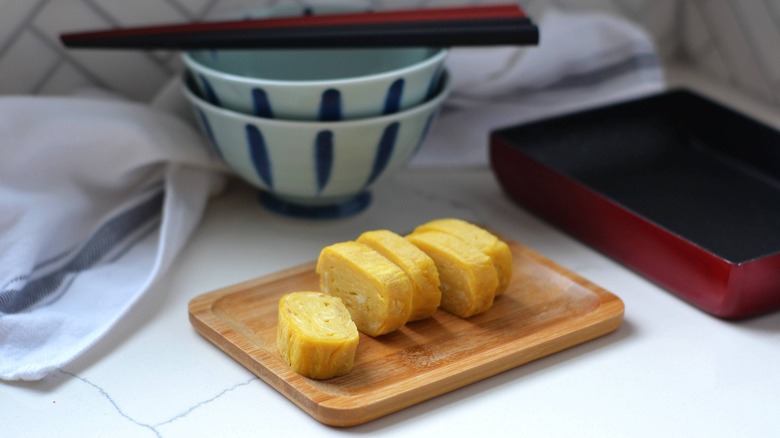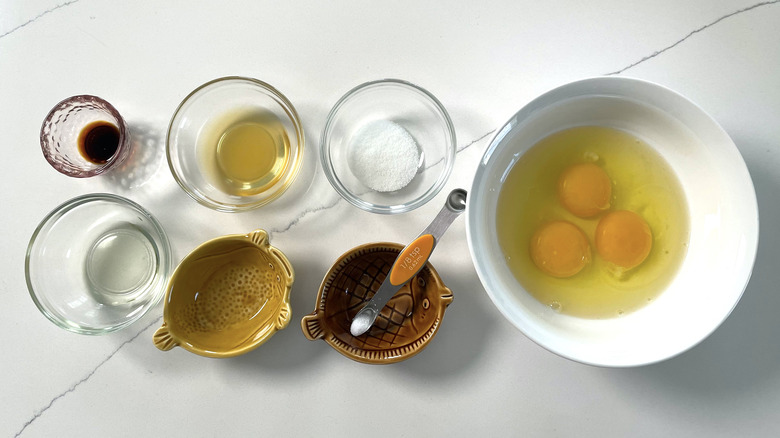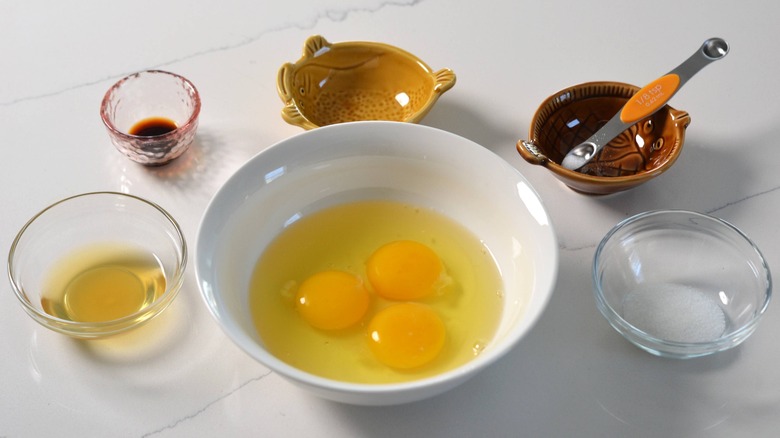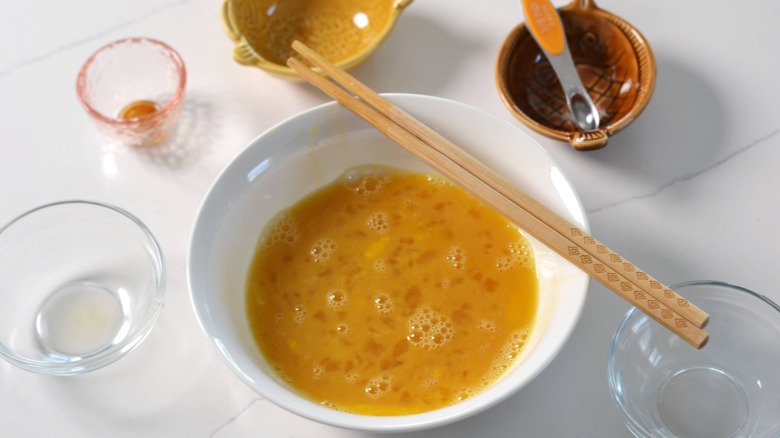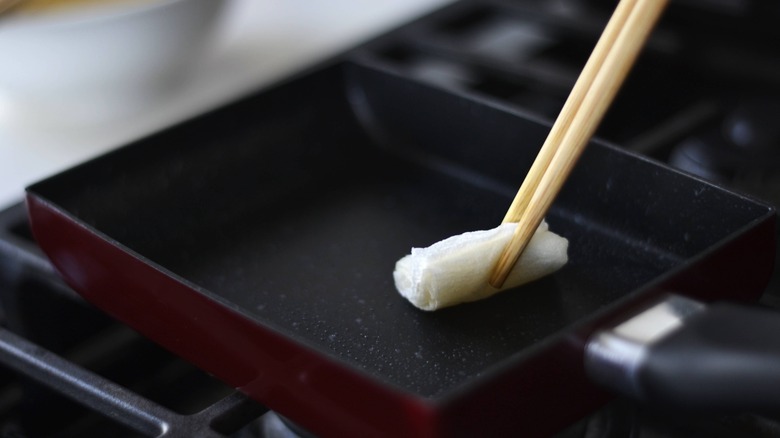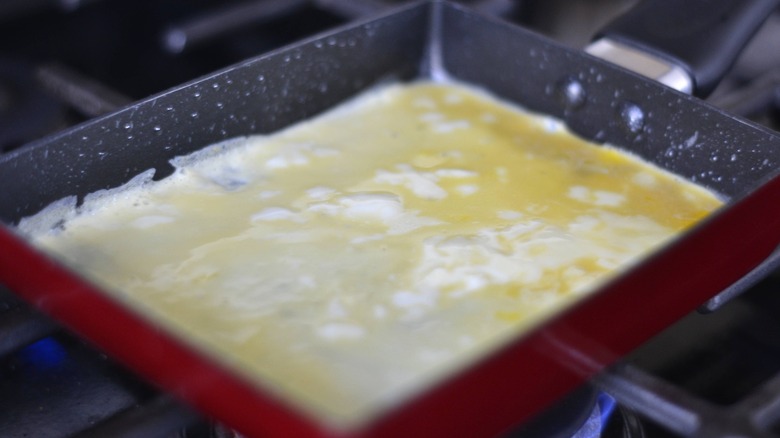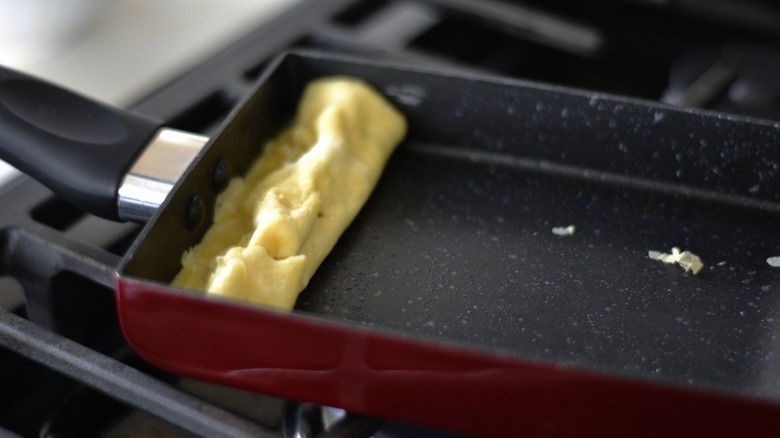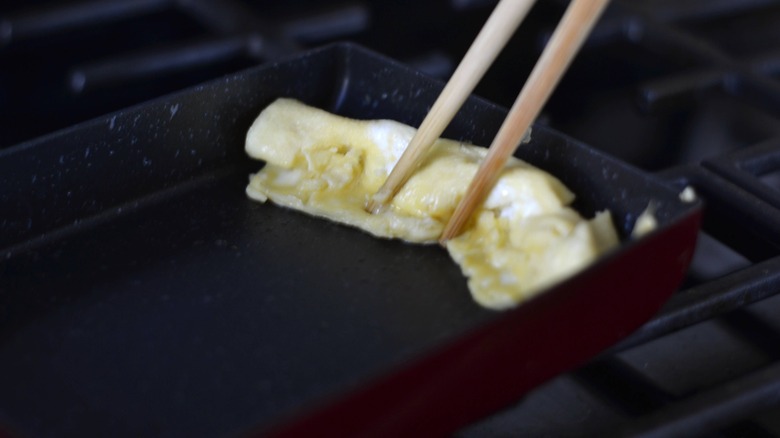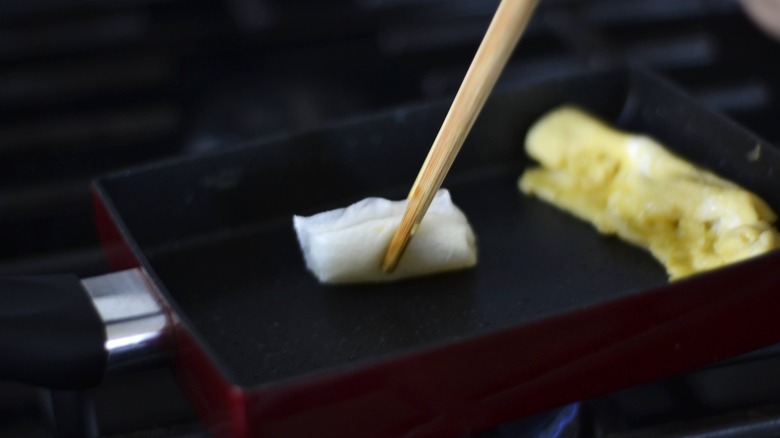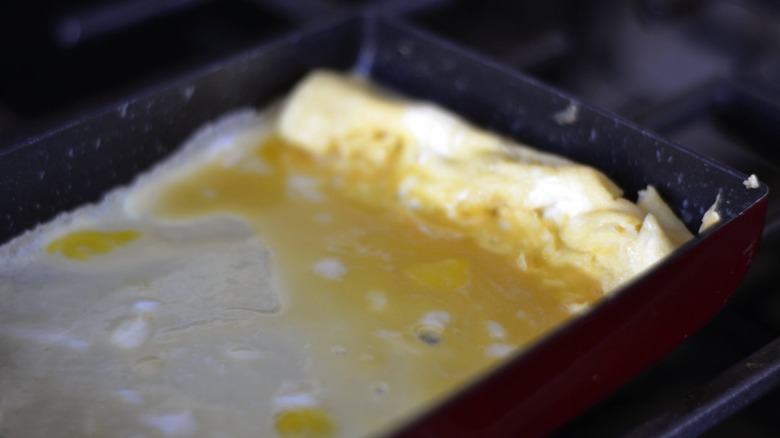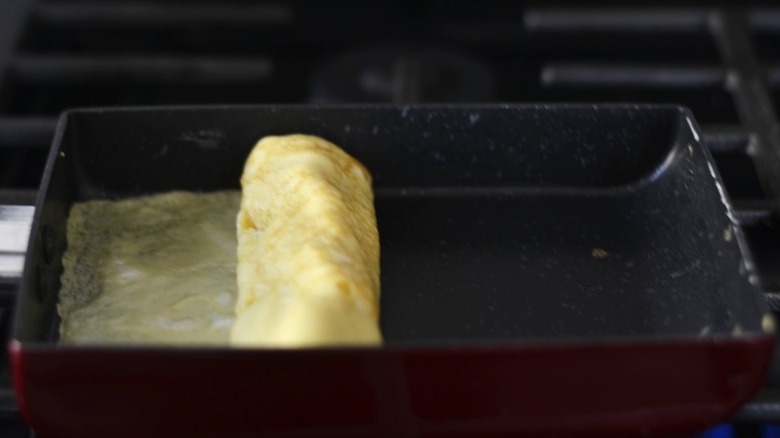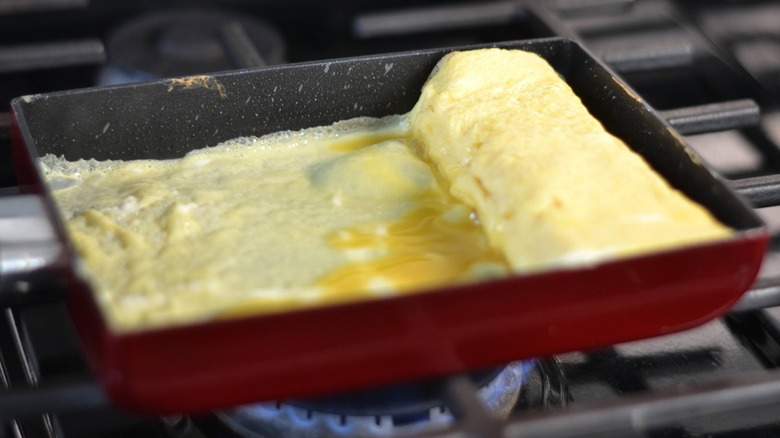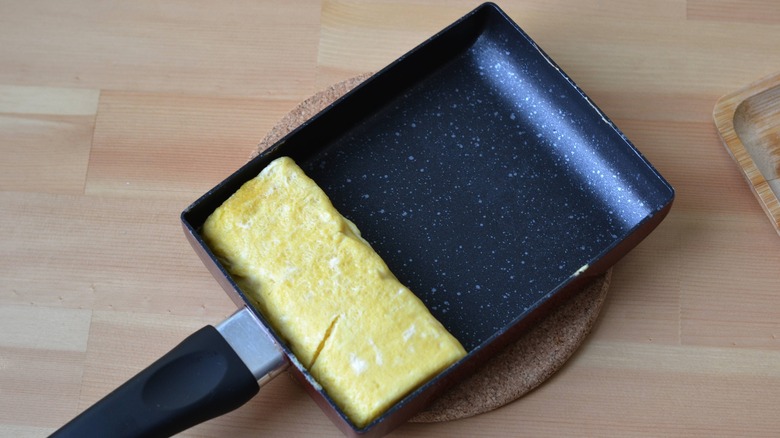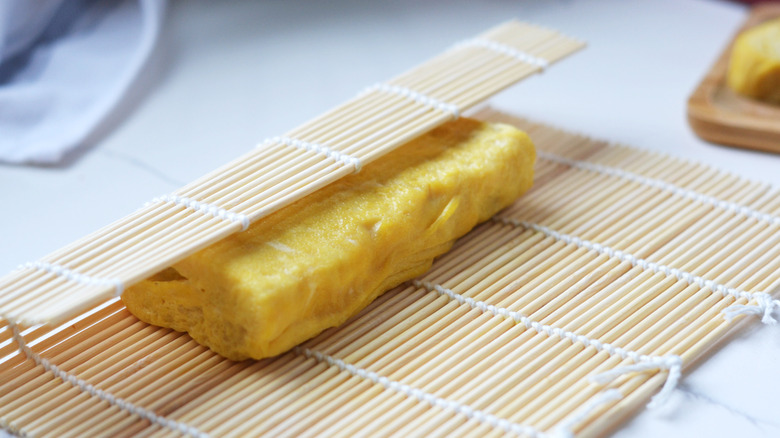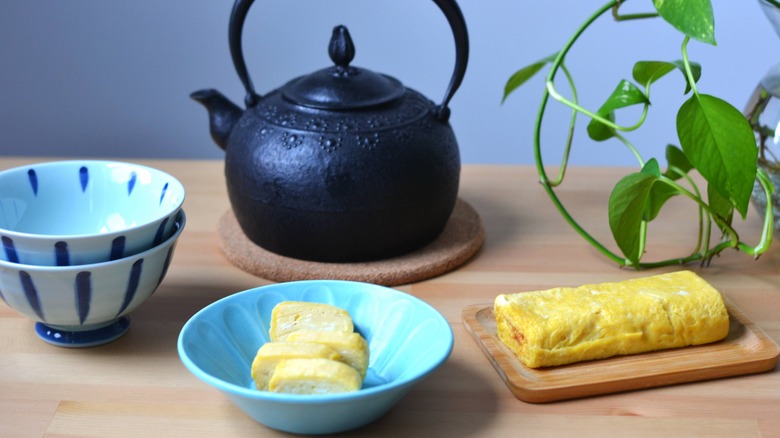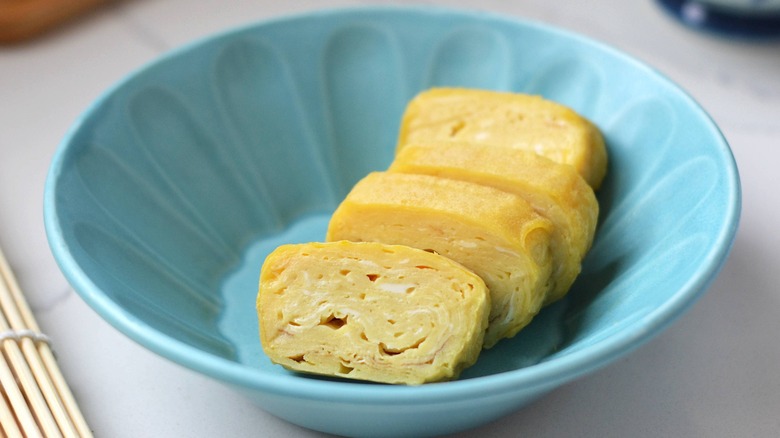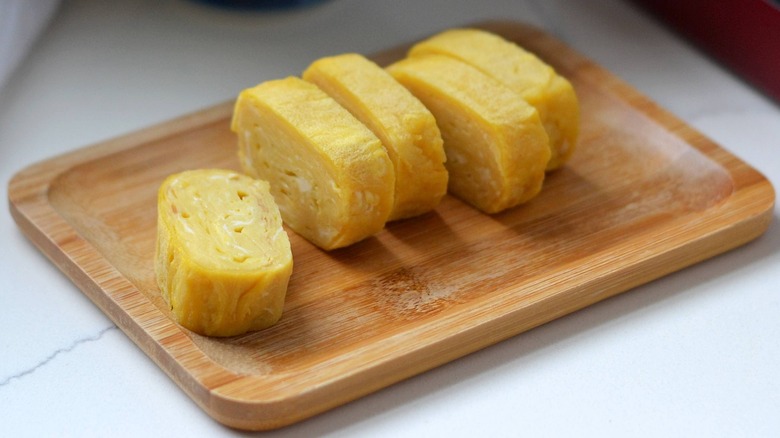Classic, Custardy, Just A Touch Sweet Tamagoyaki Recipe
Eggs are an all-around winner when it comes to versatile ingredients. Whether you crack them into a sweet bake or whisk them into a savory meal, they are a cooking powerhouse. If you've perfected your French omelet game, it's time to turn to Japan's take on this delicious dish. Tasting Table recipe developer Rika Hoffman shares this classic, custardy, just a touch sweet tamagoyaki recipe that will make an excellent foundation for your egg experimentation.
"Delicately flavored with dashi, a katsuobushi-based (dried bonito) soup stock, tamagoyaki is a staple in the Japanese bento," Hoffman says. "I love the balance of savory flavor of the dashi and the subtle sweetness from the egg." She's tried several versions of the dish and notes, "This is a pretty standard, homestyle tamagoyaki recipe, like the one I grew up eating, and it can easily be remixed using different ingredients. Between layers, you can add a sheet of nori or sprinkle in some cheese, scallions, okra, benishouga (Japanese pickle), or spinach."
Gather the ingredients for this classic, custardy, just a touch sweet tamagoyaki recipe
For this recipe, you'll need large eggs, dashi (or instant dashi granules mixed with water), sugar, soy sauce, mirin, salt, and canola oil (or another, neutral-flavored oil).
Step 1: Beat the eggs
Beat eggs in a bowl.
Step 2: Add seasonings
Add dashi, soy sauce, mirin, sugar, and salt. Mix until fully incorporated.
Step 3: Heat oil in pan
Heat a small pan over medium-low heat. Add oil and coat the pan evenly using a piece of paper towel.
Step 4: Pour in the eggs
Add just enough egg mixture to cover the bottom of the pan. Rotate the pan to spread the egg mixture evenly.
Step 5: Roll the eggs
Pop any bubbles that appear, then roll the egg mixture up in a cylinder, working from one end of the pan to the other.
Step 6: Make space in the pan
Scoot the tamagoyaki to one side of the pan.
Step 7: Add more oil to pan
Re-coat the surface of the pan in oil using the oil-saturated paper towel from earlier.
Step 8: Add more egg
Add just enough egg mixture to cover the bottom of the pan. Lift the rolled, cooked egg to allow the runny egg mixture to flow underneath it.
Step 9: Cook and roll
Wait a few seconds for the new layer of egg to cook, then start rolling the cooked tamagoyaki in the new layer from one end to the other.
Step 10: Repeat
Repeat steps 6–9, creating layers and rolling up the tamagoyaki until there is no egg mixture remaining.
Step 11: Seal the tamagoyaki
After the final layer, gently press the tamagoyaki against the edges of the pan to neatly seal it.
Step 12: Roll into a cylinder
While the tamagoyaki is still hot, roll it in a bamboo sushi mat or aluminum foil and gently squeeze it into a cylindrical shape.
Step 13: Cut and serve
Cut into ½-inch slices and serve warm, at room temperature, or chilled.
How should you serve and store tamagoyaki?
While you may already have a preference regarding the temperature of your eggs, Hoffman says, "Tamagoyaki can be eaten warm, room-temperature, or chilled, making it a perfect make-ahead side dish." Thanks to the soft, creamy texture, you won't have to deal with overcooked, rubbery eggs.
There are plenty of ways to dress up this protein dish, whether you go with familiar favorites like bacon or stick to Japanese recipes. "This typical Japanese side dish can be served at any time of day, for breakfast, lunch, or dinner," Hoffman says. "Tamagoyaki often appears in bento (Japanese packed lunch boxes) alongside other foods like rice, grilled fish, karaage, korokke (croquettes), simmered vegetables, and pickles." Basically, you can pretty much serve this custardy egg dish with whatever you desire. If you have leftovers or want to prep this ahead of time, Hoffman says, "Tamagoyaki should be stored in the refrigerator and is best eaten within 1–2 days."
Do you need a special pan to make tamagoyaki?
You might gather from the images that this tamagoyaki recipe is prepared in a special, rectangular pan. Thankfully, you can still whip up this rolled omelet without purchasing a new skillet. "While the shape may turn out a little irregular, a circular pan can also be used, and it'll still taste great," Hoffman says.
For best results, she instructs, "You can simply roll the tamagoyaki from end to end like you would in a rectangular pan. Or, if you want to create a neater rectangular shape, you can simply fold in two opposite edges of each layer of egg to create straight sides, then roll it up from one end of the pan to the other." Ultimately, the technique that gives tamagoyaki its unique consistency is cooking a bit of the liquid eggs at a time before rolling them into the omelet. Doing so creates layers in the omelet and produces the delicate and light texture that makes tamagoyaki delicious.
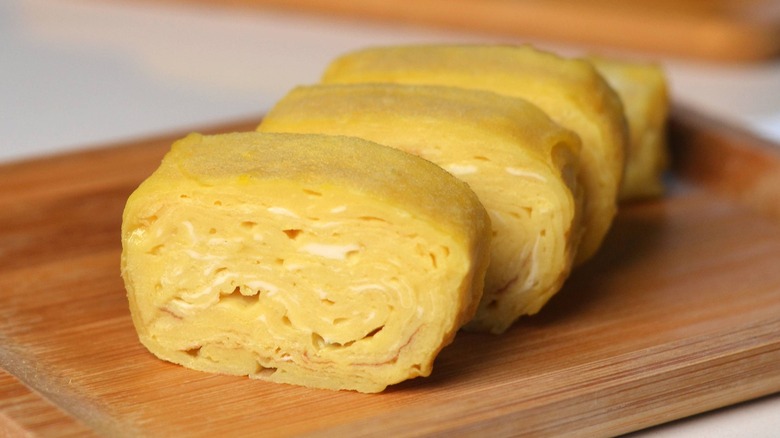
- 3 large eggs
- 2 tablespoons dashi, or ¼ teaspoon instant dashi granules mixed with 2 tablespoons water
- 2 teaspoons sugar
- ½ teaspoon soy sauce
- 1 teaspoon mirin
- Pinch of salt
- 1 tablespoon canola oil or other neutral-flavored oil
- Beat eggs in a bowl.
- Add dashi, soy sauce, mirin, sugar, and salt. Mix until fully incorporated.
- Heat a small pan over medium-low heat. Add oil and coat the pan evenly using a piece of paper towel.
- Add just enough egg mixture to cover the bottom of the pan. Rotate the pan to spread the egg mixture evenly.
- Pop any bubbles that appear, then roll the egg mixture up in a cylinder, working from one end of the pan to the other.
- Scoot the tamagoyaki to one side of the pan.
- Re-coat the surface of the pan in oil using the oil-saturated paper towel from earlier.
- Add just enough egg mixture to cover the bottom of the pan. Lift the rolled, cooked egg to allow the runny egg mixture to flow underneath it.
- Wait a few seconds for the new layer of egg to cook, then start rolling the cooked tamagoyaki in the new layer from one end to the other.
- Repeat steps 6–9, creating layers and rolling up the tamagoyaki until there is no egg mixture remaining.
- After the final layer, gently press the tamagoyaki against the edges of the pan to neatly seal it.
- While the tamagoyaki is still hot, roll it in a bamboo sushi mat or aluminum foil and gently squeeze it into a cylindrical shape.
- Cut into ½-inch slices and serve warm, at room temperature, or chilled.
| Calories per Serving | 192 |
| Total Fat | 14.3 g |
| Saturated Fat | 2.9 g |
| Trans Fat | 0.1 g |
| Cholesterol | 279.1 mg |
| Total Carbohydrates | 4.9 g |
| Dietary Fiber | 0.0 g |
| Total Sugars | 4.5 g |
| Sodium | 243.0 mg |
| Protein | 9.9 g |
